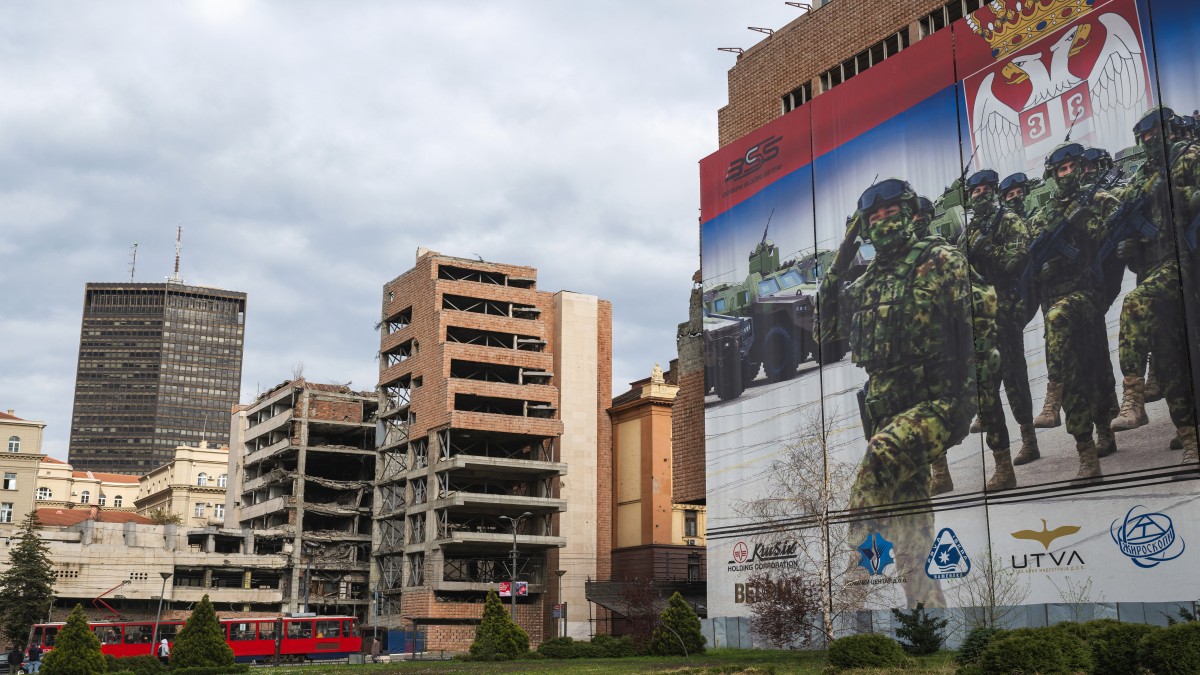To the dismay of the residents, a bombed-out building in Belgrade that has served as a national emblem of the 1999 NATO assaults on Serbia may soon be transformed into a luxurious hotel funded by Donald Trump’s son-in-law.
Jared Kushner, who also advised his father-in-law during his administration in the United States, announced in mid-March his ambitions to invest in premium real estate in Serbia, including the former Yugoslav army headquarters.
Serbian opposition member of parliament Aleksandar Jovanovic Cuta and a New York Times investigation showed that the Serbian government planned to transfer the building and adjacent property to a corporation owned by Kushner.
Three massive glass skyscrapers are expected to replace the structure, which is located a short distance from Serbia’s foreign and defence ministries, according to leaked designs.
According to the New York Times, the 99-year lease was provided to Kushner’s business at no cost.
Due to its symbolic significance for the 1999 NATO aerial bombing campaign conducted by the United States that ended the Kosovo War, the building’s sale is a contentious topic among the people of Serbia.
“Leaving it like this for another 200 years isn’t really a solution,” retired journalist Srdja Nikolic said.
“But I am against the idea of giving it as a gift to anyone – particularly to those who initiated what happened.”
Symbol of ‘struggle’
On March 24, 1999, the bombardment started without the UN Security Council’s consent. Its goal was to put a stop to the brutal suppression of ethnic Albanian rebels in Kosovo by Serbian leader Slobodan Milosevic.
Impact Shorts
More ShortsWith the departure of Serbian forces from Kosovo in June of that year, the conflict that claimed the lives of over 13,000 people came to a conclusion.
The ruined building “is evidence of the destruction of international law,” Nikolic said, “destroyed in 1999 by the trampling of the United Nations Charter, with false excuses.”
Even in ruins, the building “represents our struggle, a difficult period that we navigated and from which we emerged victorious”, said Sanja Handzic, a 28-year-old local dental technician.
The building, which was the headquarters of the old Yugoslav army, was declared a “cultural asset” by the Serbian government in 2005.
Local resident Jasminka Avramovic, 66, remembers the day the building was hit by a bomb.
“I was born in the Senjak district, near here. When they bombed here, I came to Sarajevo Street to pick up pieces of glass. I still have the pieces of glass as a souvenir. It was a catastrophe. They are not nice memories,” she said.
“We have to rebuild it, it’s ugly,” the retiree said, “but what a magnificent idea” to give the building to the Americans, she remarked bitterly.
“They are not really our friends. I wouldn’t give it to them. If we have to give it away, we should give it to Russia.”
Memory of NATO bombings
The memory of NATO’s bombings are everywhere in Serbia and a quarter of a century later, resentment towards the alliance is still strong amongst locals.
The official death toll from the 11 weeks of bombardments has never been confirmed.
The figures range from 500 dead, according to the NGO Human Rights Watch, to 2,500, according to Serbian officials.
“The memory of the 1990s is unpleasant,” said Zoran Stosic, 83, “but we have to leave these buildings as they are, because they remind us of those unpleasant times. It’s not just the beautiful things that we should remember.”
For him, rather than a luxury hotel, it should be a place of remembrance.
“We should preserve these buildings, conserve them, and turn them into a museum. To remind us the importance of peace, that these things should not happen again.”


)

)
)
)
)
)
)
)
)



